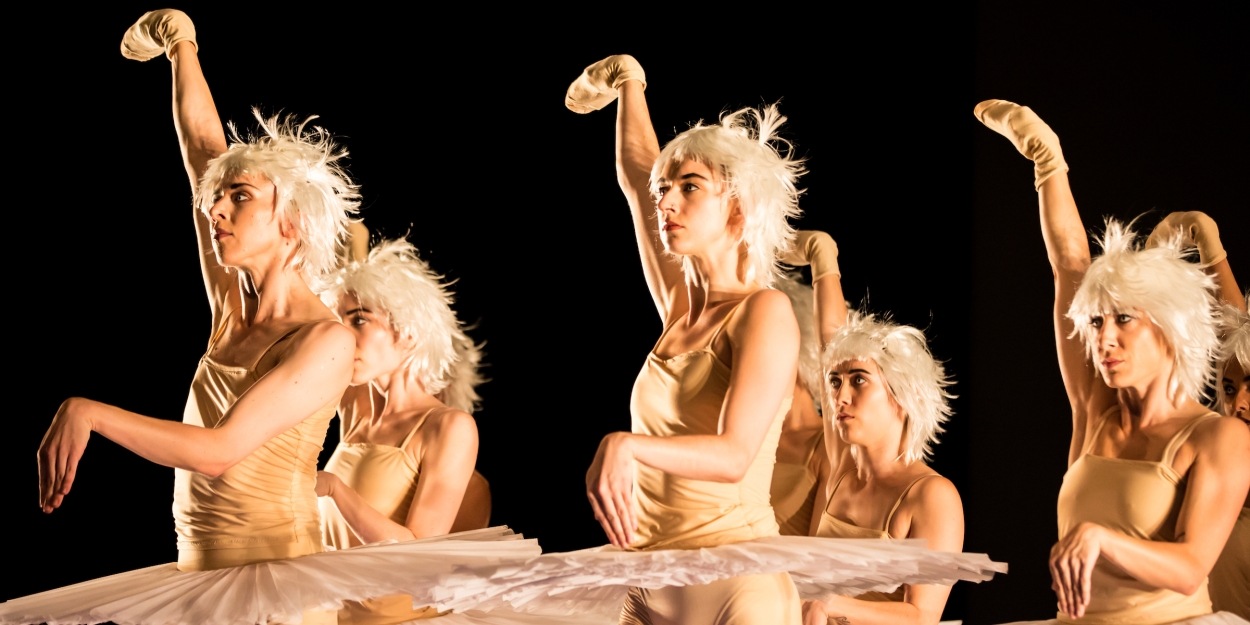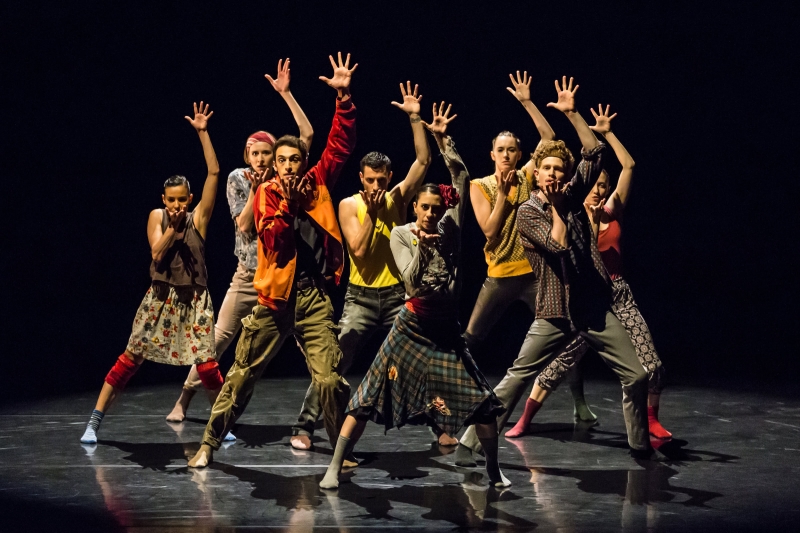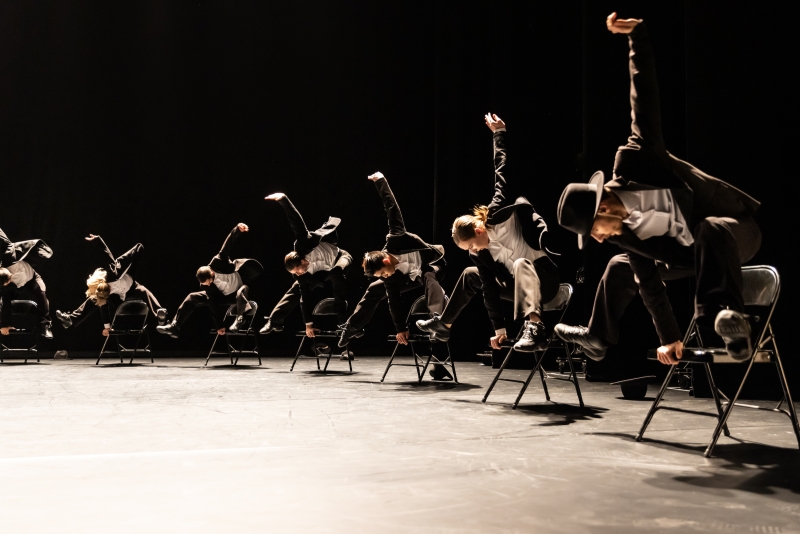Review: SWAN LAKES AND MINUS 16 at Harbourfront Centre
Torque's final show of the season is a cygnet-ure piece

How do you respond to one of history’s most iconic ballets? The final show in Harbourfront’s TORQUE series of international dance, SWAN LAKES and MINUS 16, brought three works to the stage under the curation of Gauthier Dance/Dance Company Theatrehaus Stuttgart’s artistic director, Eric Gauthier.
For the first half of the program, Gauthier invited two choreographers, Marie Chouinard and Hofesh Shechter to enter into dialogue with Tchaikovsky’s famous ballet in a 20-minute response each. The results were incredibly different, one piece ascetic, sharp and poignant, the other warm, free-wheeling and intoxicating.
The first piece, LE CHANT DU CYGNE: LE LAC, choreographed and designed by Chouinard with composer Louis Dufort, was a comment on societal violence against women which examines the violation at the heart of the ballet, the story of women who have lost their sense of self and agency through the unexplained curse of a manipulative and evil man.
In Chouinard’s work, the curtains open to a stark white stage populated with short rectangular boxes, as though we are about to witness a step class on a spaceship. The back wall is soon consumed by a projection of swirling flame; the flames, heavy, metallic and slightly unrealistic, lend the austere space an edgy quality reminiscent of an early 2000s video game. Emerging from the sidelines, dancers wear wild white wigs and stiff, starchy skirts, a kind of hyper-tutu flaring out from the body at a nearly flat 90-degree angle. Each holding a sock-covered hand out to simulate a beak, they appear nearly weightless at first glance.
These initially delicate (and, for Swan Lake, likely anticipated) fluttering movements contrast with a creeping glitch that infects the empty-eyed dancers, splintering their coordinated routine in almost hallucinogenic ways. The tremor in the swan matrix grows from an almost imperceptible ortolan to the ostrich in the room before the piece’s subtext is made literal text: the dancers gather at the base of the stage to form a wall while shouting at the audience, captioned by projections using Colectivo LASTESIS’ Un violador en tu camino. Moving from silent to non-silent scream before embracing each other, they cry, accusatorily: “El violador eres tu!” “The rapist is you!”
With such clear and potent visuals, Chouinard’s work feels more powerful as subversive metaphor than direct battle cry—but the impact of finding one’s voice in a dance form not usually given to the spoken word can’t be discounted.

After the cerebral and somber first response to Tchaikovsky’s work, the second piece was less obvious in how it fit into the Swan Lake conversation. Shechter’s SWAN CAKE, scored to a composition by the composer, did in fact feel like more of a confection, despite its performers looking far more bohemian than Chouinard’s iced bonbons. A large game of “Follow the Leader” (or, perhaps, “Duck, Duck, Swan”), with movements such as flapping, waving and petting radiating through the company at will to the sound of trumpets played with blissful abandon, the number was effectively hypnotic.
Shechter, with fellow lighting designer Mario Daszenies, makes good use of varied dedicated lights, using footlights, spotlights, laser lights and haze to highlight specific dancers.
At intermission, audiences were treated to the gyrations of a single dancer, who peeked through the curtains before delivering an impressively physical routine that included deep splits and twerking.
Perhaps the star piece of the evening, MINUS 16 was a departure from the first half’s Swan Lake theme. An amalgam of several short excerpts from choreographer Ohad Naharin’s work, MINUS 16 has the feeling of a symphony with several movements, from the formalized ritual to the playful, gentle invitation to take part in the dance. Beginning with a sort of surf-rock take on Hava Nagila, the piece exhorts the audience to think about “the illusion of beauty” and “the panic behind the laughter.”

As though attending a Dancers Anonymous meeting, the corps sits in a large semicircle of folding chairs, dressed like Michael Jackson in “Dangerous,” skinny black suits paired with white shirts and fedoras. Appropriately timed, as the Passover seders were only days away, the dance really begins to the Hebrew call-and-response cumulative counting song, "Echad Mi Yodea."
"Echad Mi Yodea," or “Who Knows One?” is a Passover song designed to teach children and adults alike about spiritual and mental freedom. Dance exists in that same delicate balance between ritual and freedom, and the corps echoes the song in coordinated movement, coming together to add a new flourish for each verse. Most notably, with impressive fuse-like precision, they arch back in order to spray outward in a flash of exposed white shirts that seems to travel down the line.
At the end of each repetition, the final dancer, collapsing theatrically onto the floor, catapults forward in a sprawl of limbs like an elaborate chalk outline only to crawl back to reset into place as the next verse begins. Enacted over and over, the motion becomes increasingly ridiculous and entertaining.
The piece’s second movement, a pas de deux, seems an echo of the Swan Lake responses in its display of tension and balance, deliberate heaviness mixed with light. One dancer pleads toward the other over and over with clasped hands, only to suddenly use the same begging hands as though they were a knife, stabbing outwards.
Neither the raucous first movement nor the subdued second hints at the third’s surprise, as dancers break the fourth wall. To say more would be a spoiler, but the audience participation was exceedingly charming, leading the evening’s end toward controlled chaos to the tune of “Somewhere Over the Rainbow.”
The two movements of SWAN LAKES, plus MINUS 16, all take us on a journey that’s far more important than the destination. One could say it’s pearls before swan.
Photo of LE CHANT DU CYGNE: LE LAC provided by Marie Chouinard. Photos of SWAN CAKE and MINUS 16 by Jeanette Bak.
Reader Reviews
Videos

